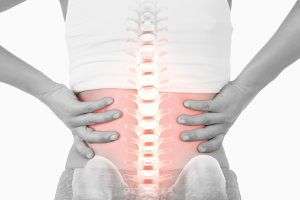Peak Experiences The American philosopher and naturalist Henry David Thoreau roamed far and wide over the hills and mountains of his native Massachusetts and neighboring New Hampshire. In his masterwork, "Walden," Thoreau famously stated that we must "reawaken and keep ourselves awake, not by mechanical
Read more
Vertebral subluxation refers to a set of signs and symptoms that affect the spinal column. Specifically, it is a complex that occurs when the bones of the spine lose their usual position and motion due to chemical imbalances, alcohol, prolonged sitting, trauma or even stress. An automobile accident and improper lifting are just two types of trauma that can cause vertebral subluxation complex, or VSC.
How Does Vertebral Subluxation Complex Affect the Body?
The term “complex” is associated with vertebral subluxation because, as the word suggests, the condition is multifaceted and consists of many elements. This is because VSC is the underlying cause of health care problems. When one or more vertebrae are misplaced or fail to carry out their intended motion, they can disrupt the function of the nervous system. The vertebral bones are designed to contain and guard this system, so interference can lead to pressure on the spinal cord or the nerve roots as they pass out of the spinal column. When VSC presents, a number of things can happen to affect the spine, its related soft tissues, and even the tissues and organs controlled by the affected nerves.
Vertebral Subluxation Complex and Its Five Interrelated Parts
VSC typically has — and is — identified by five major interconnected components, including:
- Spinal kinesiopathology. This component sounds much like vertebral subluxation itself. Here, the bones of the spine have lost their natural motion and position, making it difficult for the patient to turn and bend. It sets the other four components in motion.
- Myopathology. When the muscles sustaining the spine weaken, atrophy or become stiff, they can go into spasm. This can result in scar tissue that changes the muscle tone.
- Neuropathophysiology. If the spine functions improperly, it can obstruct, stretch or agitate nerve tissue. Nerve tissue is delicate. Irritation in these ways can cause nerve system dysfunction and lead to aggravating symptoms elsewhere in the body.
- Histopathology. A patient’s body temperature can rise due to an increase in blood and lymph supplies. This, in turn, can lead to inflammation and swelling, which can then cause discs to protrude, tear, herniate or deteriorate.
- Pathophysiology. This is when abnormal bony growths like bone spurs try to meld faulty spinal joints, leading to decay of the spine, scar tissue and nerve dysfunction.
The articles within this section discuss each of the five components further.
How Chiropractic Treatments Can Help
Your chiropractor will not only detect and minimize VSC, but, once the spinal bones are back in their normal position and have regained their natural function, he or she will try to prevent the problem from recurring. Chiropractic treatments, particularly spinal adjustments, can be used to treat VSC and ward off its associated symptoms.
To find out how chiropractic treatments can be designed to address your particular VSC-related condition, contact your practitioner.
-
Peak Experiences
-
Dynamic Warm-ups
In a common occurrence, you bend over to pick up the pencil you inadvertently dropped on the floor. Or you bend over to pick up the soap bar that has slipped through your fingers in the shower. Or you bend over to lift a bag of groceries out of your automobile trunk. These are all daily events. But on
Read more -
Summer Sports
Summer Sports In the summertime, everyone's thoughts turn to the outdoors. We want to get out in the sun and have some fun. Some people do exercise outdoors, such as running, walking, and biking, all year long regardless of the weather.1 For others, summer's warmer temperatures make activity outside
Read more -
Wellness Gardens
Wellness Gardens When time is spent in an office or indoors day in and day out, some can lose that connection to the outside world. And that loss of connection can lead to higher stress levels and more health ailments without even realizing it. But when that the gap between office life and outdoor life
Read more -
Smart Shoulders
Our shoulder joints have the greatest range of motion of any of the musculoskeletal joints in our bodies. The shoulder joint is really two joints, the glenohumeral joint between the arm bone (humerus) and the shoulder blade (scapula) and the acromioclavicular joint between the acromion (a bony projection off the scapula) and the collarbone (clavicle). The glenohumeral joint is a ball-and-socket joint and the acromioclavicular joint is a gliding joint.
Read more


